


| Modell | Tl mm | Bl mm | Sl mm | Sd mm | Factory | Quantity |
| m/1867 | 560 | 485 | 67 | 19.1 | Husqvarna | Unknown |
| " | 560 | 485 | 67 | 19.1 | Carl Gustaf Stad | Unknown |
| " | 560 | 485 | 67 | 19.1 | Remington | 10,000 |
| m/1867-89 | 538 | 490 | 47 | 15.5 | Carl Gustaf Stad | 102.000 (?) |
There are 8 different models of m/1867 rifle, 5 new and 3 modifications from breechloaders and chamber loaders:
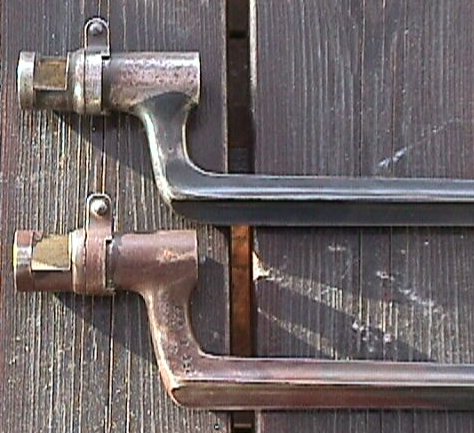 |
Here we can see the difference between the Remington
made m/1867 (top) and the Husqvarna made bayonet (bottom).
Some observations about the Remington made bayonet.
Many of these was probably reworked to m/1867-89.
|
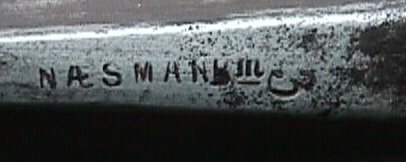 |
Unusual maker of m/1867 bayonet. Made for Carl
Gustaf Stad. EA Naesman main business was door locks. They changed name in 1881, why this bayonet must have been made in the period 1867-1881. They made 6000 bayonets. |
| Maker | Number |
| Johan Svengren | 8.000 |
| E A Näsman | 6.000 |
| J Wahlén | 3.000 |
| B O Liberg | 3.000 |
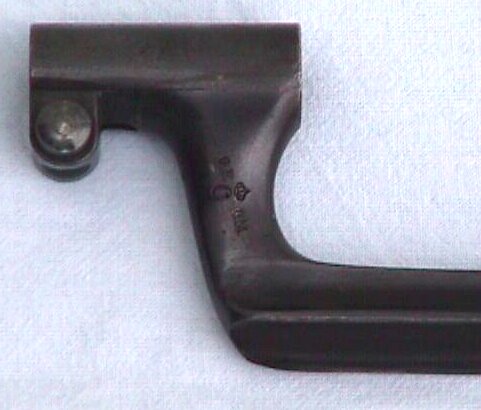
|
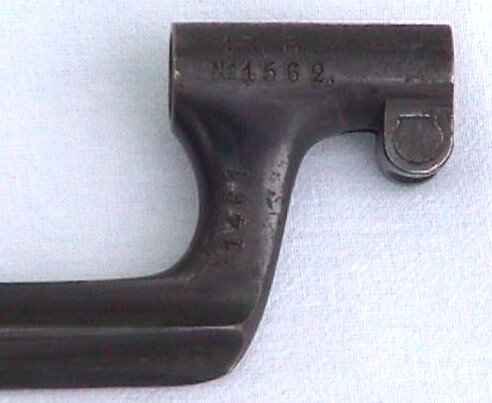
|
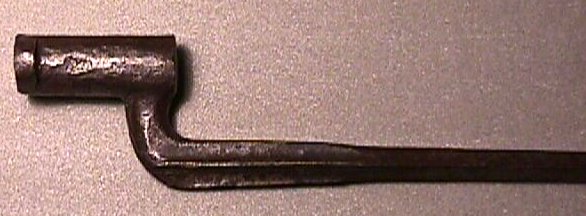
This is the first 'step'. The socket is roughly forged, the blade is forged from a square shape. |
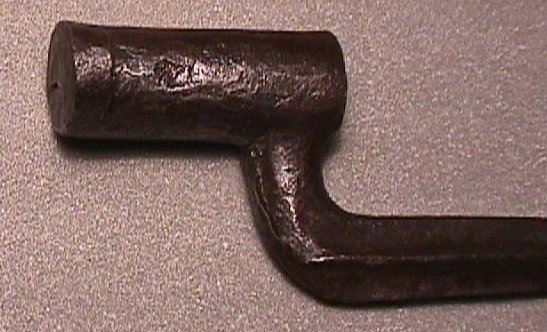 |
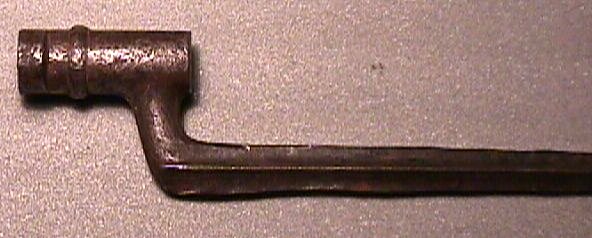
The socket has been further forged, locking ring reinforcement is present.
Whole blade is forged.
|
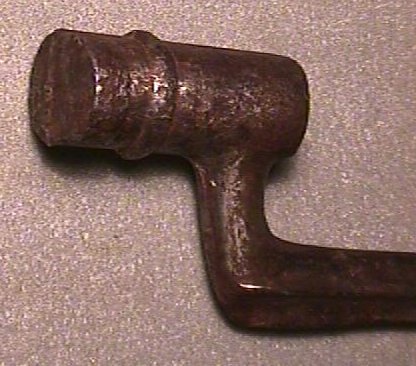 |
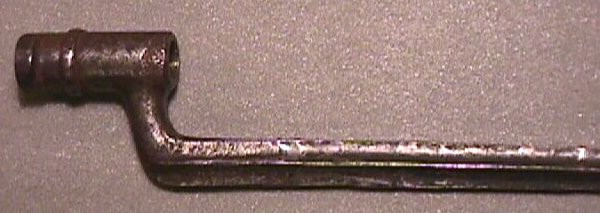
Now the socket 'hole' is drilled. |
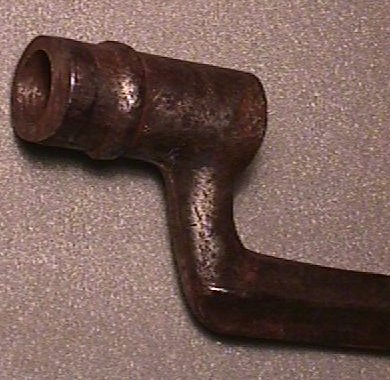 |
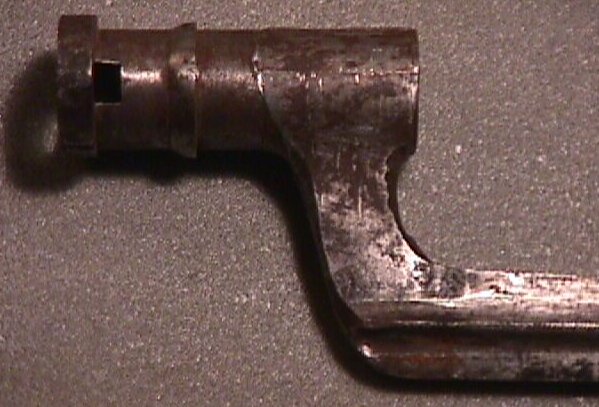
The muzzle slot has been opened/milled. The socket and blade is milled. |
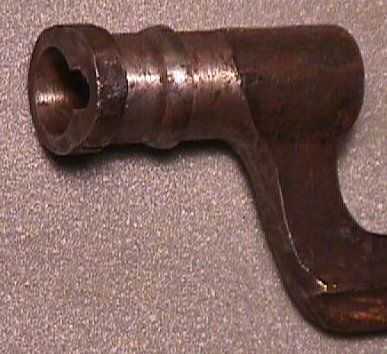 |
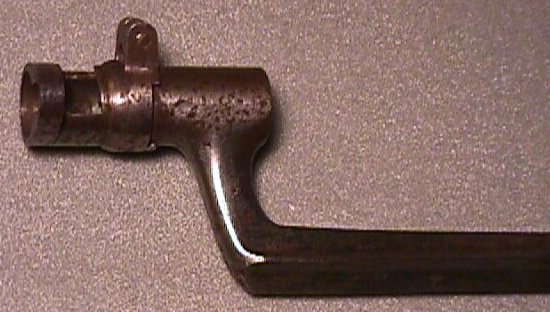
Now we're talking. Looks like a bayonet ! |
| Tl mm | Bl mm | Sl mm | Sd mm | Factory | Quantity |
| 485 | 443 | 44 | 19.1 | unknown | unknown |
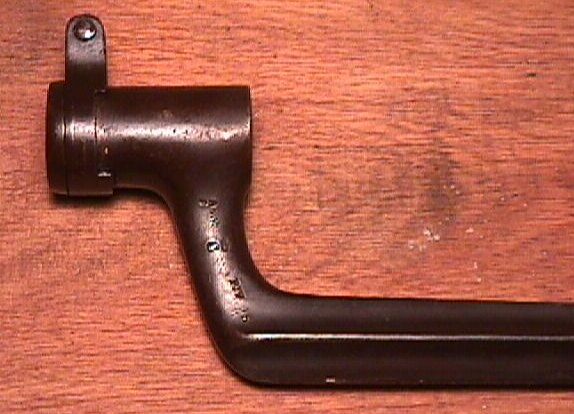 |
Some pictures showing the socket and the tip
of a school/practice bayonet.
The socket shortened from the original m/1867 socket, resulting is a short, straight slot. (See picture below). The tip is blunt. The whole bayonet is browned. This bayonet is delivered to an armoury, as it is approval marked. It is manufactured at 'Carl Gustaf Stad'. Normally (?) the bayonets from Carl Gustaf Stad are blued, but this is browned after the modification. |
 |
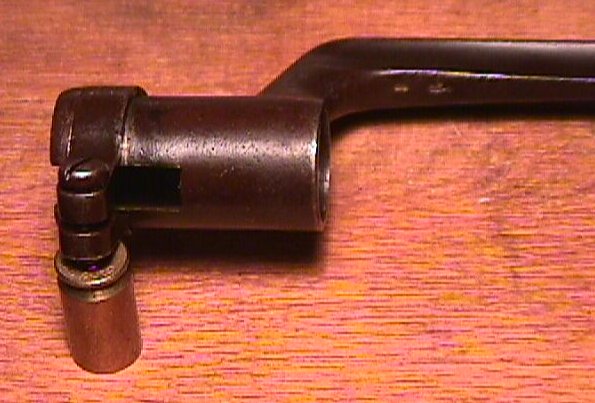 |
| Tl mm | Bl mm | Sl mm | Sd mm | Factory | Quantity |
| 330 (430) | 283 (383) | 44 | 19.1 | unknown | unknown |
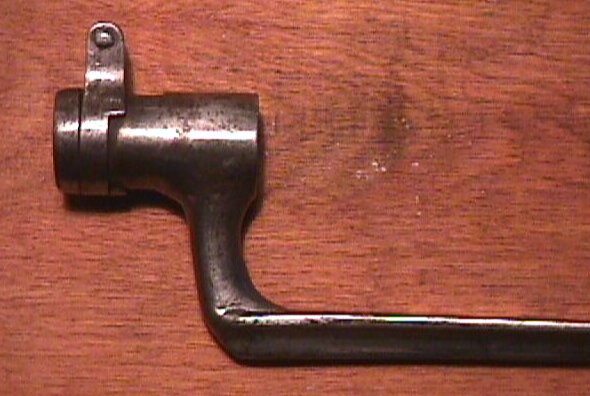 |
The socket is modified in the same way as the
above bayonet. The blade is triangular, not cruiciform !
Someone has welded a probably 100 mm extra tip on my bayonet, making it hard to estimate the original length. These pictures shows the socket and upper part of the blade. The socket is the same as the school/practice bayonet above. It is a shortened m/1867 socket. The blade is triangular, not cruiciform as the normal m/1867. I don't know if it is made like this or if it is a reworked m/1867 blade.The dimensions of the blade (except length !) match the m/1867 blade. The arm is marked with a single '4'. |
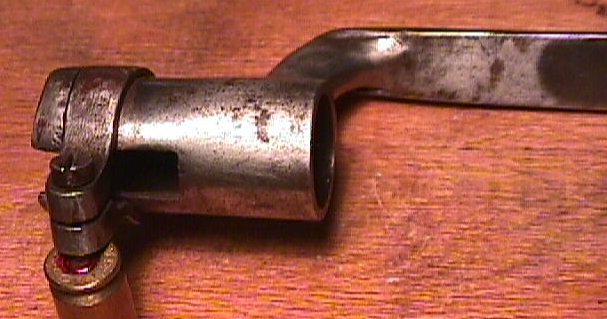 |